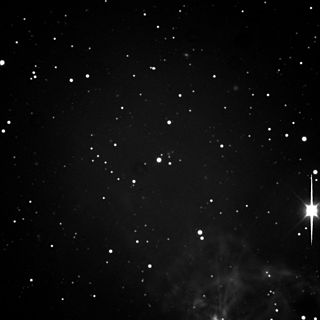
Thetis, minor planet designation 17 Thetis, is a stony asteroid from the inner regions of the asteroid belt, approximately 90 kilometers in diameter. It was discovered on 17 April 1852, by German astronomer Robert Luther at Bilk Observatory in Düsseldorf, Germany who deferred to Friedrich Wilhelm August Argelander the naming his first asteroid discovery after Thetis from Greek mythology. Its historical symbol was a dolphin and a star; it is in the pipeline for Unicode 17.0 as U+1CECA .
1952 Hesburgh, provisional designation 1951 JC, is a rare-type carbonaceous asteroid from the outer regions of the asteroid belt, approximately 37 kilometers in diameter.
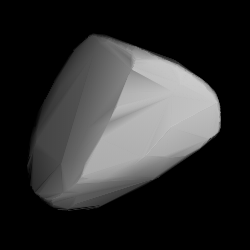
1010 Marlene is a carbonaceous background asteroid from the outer regions of the asteroid belt, approximately 47 kilometers in diameter. It was discovered on 12 November 1923, by astronomer Karl Reinmuth at the Heidelberg-Königstuhl State Observatory in southwest Germany. The asteroid was named after German actress and singer Marlene Dietrich.
1018 Arnolda, provisional designation 1924 QM, is a stony asteroid from the central regions of the asteroid belt, approximately 16 kilometers in diameter. It was discovered on 3 March 1924, by German astronomer Karl Reinmuth at the Heidelberg-Königstuhl State Observatory in southwest Germany. The asteroid was named after physicist Arnold Berliner.
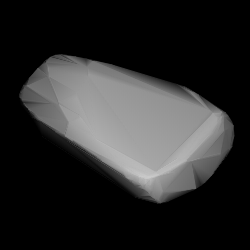
1069 Planckia, provisional designation 1927 BC, is a background asteroid from the outer regions of the asteroid belt, approximately 39 kilometers in diameter. It was discovered on 28 January 1927, by astronomer Max Wolf at the Heidelberg-Königstuhl State Observatory in Germany. The asteroid was named after German physicist Max Planck.
1166 Sakuntala, provisional designation 1930 MA, is a stony background asteroid from the central regions of the asteroid belt, approximately 26 kilometers in diameter. Discovered by Praskovjya Parchomenko at Simeiz Observatory in 1930, the asteroid was named after the figure of Shakuntala from an ancient Indian drama.
2531 Cambridge, provisional designation 1980 LD, is a stony Eoan asteroid from the outer regions of the asteroid belt, approximately 20 kilometers in diameter. It was discovered on 11 June 1980, by American astronomer Edward Bowell at Lowell's Anderson Mesa Station in Arizona, United States. The asteroid was named for the "centers of learning in England and in Massachusetts".
2826 Ahti, provisional designation 1939 UJ, is a carbonaceous asteroid from the outer region of the asteroid belt, about 37 kilometers in diameter. The asteroid was discovered on 18 October 1939, by Finnish astronomer Yrjö Väisälä at Turku Observatory, Southwest Finland. It was named after Ahti from Finnish mythology.
3037 Alku, provisional designation 1944 BA, is a carbonaceous asteroid from the central region of the asteroid belt, approximately 20 kilometers in diameter. It was discovered on 17 January 1944, by Finnish astronomer Yrjö Väisälä at Turku Observatory in Southwest Finland.
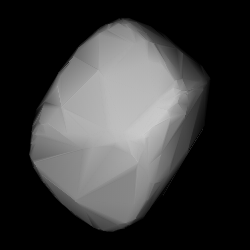
1510 Charlois, provisional designation 1939 DC, is a carbonaceous Eunomia asteroid from the middle region of the asteroid belt, approximately 24 kilometers in diameter.
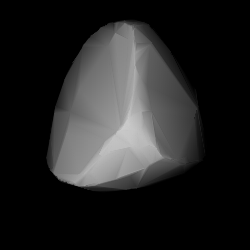
1328 Devota, provisional designation 1925 UA, is a dark background asteroid from the outermost regions of the asteroid belt, approximately 56 kilometers in diameter. It was discovered on 21 October 1925, by Russian–French astronomer Benjamin Jekhowsky at the Algiers Observatory in North Africa. The asteroid was named after Argentine astronomer Fortunato Devoto.
3687 Dzus, provisional designation A908 TC, is a carbonaceous asteroid from the central region of the asteroid belt, approximately 31 kilometers in diameter. It was discovered by German astronomer August Kopff at Heidelberg-Königstuhl State Observatory on 7 October 1908.
3642 Frieden, provisional designation 1953 XL1, is a carbonaceous asteroid from the middle region of the asteroid belt, approximately 35 kilometers in diameter. It was discovered by German astronomer Herta Gessner at Sonneberg Observatory on 4 December 1953. It is named after the goddess of peace, Pax.
3754 Kathleen, provisional designation 1931 FM, is a large background asteroid from the outer regions of the asteroid belt, approximately 55 kilometers in diameter. It was discovered at the Lowell Observatory near Flagstaff, Arizona, on 16 March 1931, by American astronomer Clyde Tombaugh, who named it after his granddaughter Kathleen Clifford. The assumed C-type asteroid has a rotation period of 11.18 hours. It is the second-highest numbered main-belt asteroid larger than 50 kilometers.
2140 Kemerovo, provisional designation 1970 PE, is a dark asteroid from the outer region of the asteroid belt, approximately 30 kilometers in diameter.
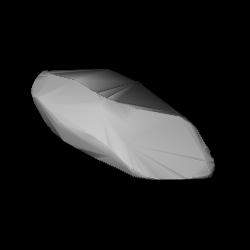
2094 Magnitka (prov. designation: 1971 TC2) is a Flora asteroid from the inner regions of the asteroid belt, approximately 12 kilometers (7.5 miles) in diameter. It was discovered on 12 October 1971, at and by the Crimean Astrophysical Observatory in Nauchnyj, on the Crimean peninsula. The discovery has not been attributed to an observing astronomer. It was later named for the city of Magnitogorsk.

4547 Massachusetts is a dark background asteroid from the central regions of the asteroid belt, approximately 24 kilometers in diameter. It was discovered on 16 May 1990, by Japanese astronomers Kin Endate and Kazuro Watanabe at the JCPM Sapporo Station on the island of Hokkaido, Japan. The asteroid was named for the U.S. state of Massachusetts.
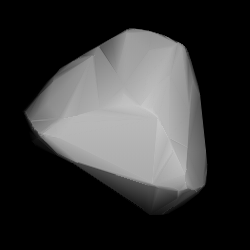
1356 Nyanza, provisional designation 1935 JH, is a dark asteroid from the background population of the outer asteroid belt, approximately 63 kilometers in diameter. It was discovered on 3 May 1935, by South-African astronomer Cyril Jackson at the Union Observatory in Johannesburg. The asteroid was named for the former Nyanza Province in Kenya, Africa.
4383 Suruga, provisional designation 1989 XP, is a Vestian asteroid and binary system from the inner regions of the asteroid belt, approximately 6.5 kilometers in diameter. It was discovered on 1 December 1989, by Japanese astronomer Yoshiaki Oshima at Gekko Observatory, Japan. The asteroid was named after the former Japanese Suruga Province. Its synchronous minor-planet moon, S/2013 (4383) 1, measures approximately 1.33 kilometers and has a period of 16.386 hours.
1585 Union, provisional designation 1947 RG, is a dark background asteroid from the outer regions of the asteroid belt, approximately 52 kilometers in diameter. It was discovered on 7 September 1947, by South African astronomer Ernest Johnson at the Union Observatory in Johannesburg, South Africa. The asteroid was named after the discovering observatory.










